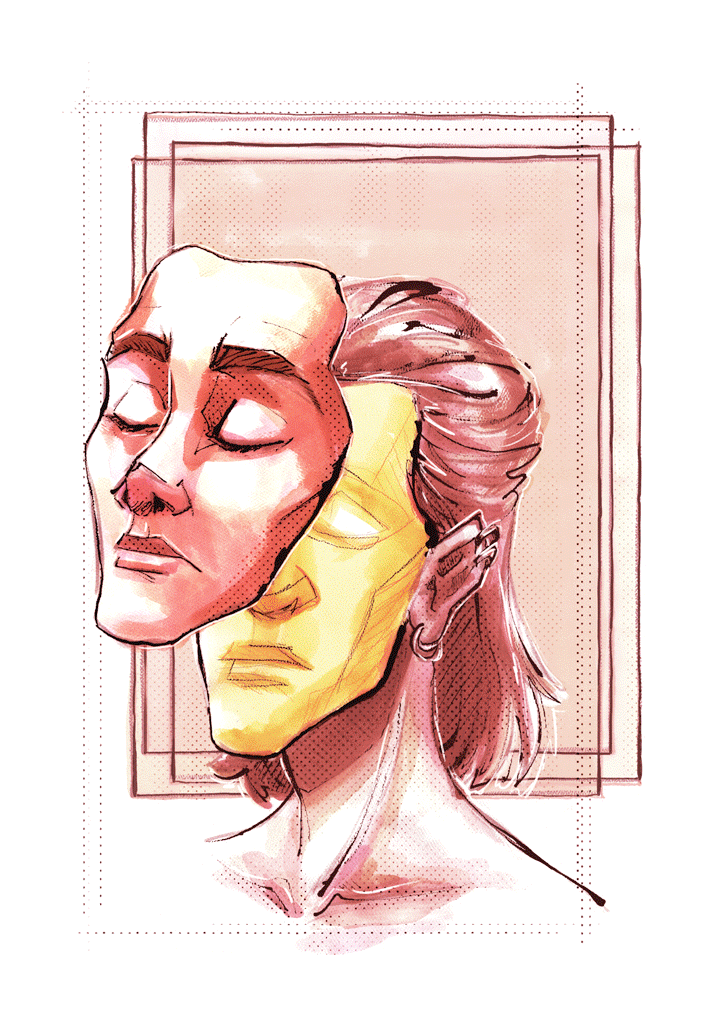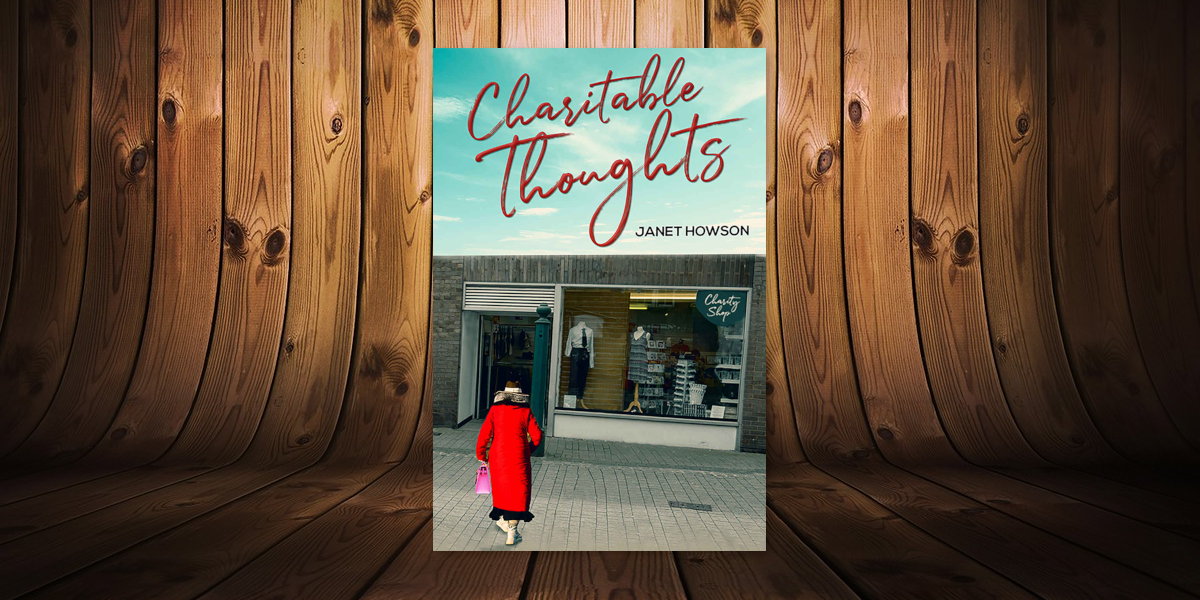Introduced by Holly King

Welcome to this week’s theme: The Gender Agenda. We all like to sort information into boxes that have a defined space and absolute borders with a lid that we can open, peek at what’s inside and close it to keep what’s inside contained. But is that how it works on the topic of gender or does that limit our understanding of each other? I think a lot of people fear the information they’ve gathered on a person (female, male, sexual identity and the associated colours, preferences, aspirations, and stereotypes) won’t stay solid and will leak out of the box all over the floor.
From my photo you will assume (correctly) I am a female. But what more than a few other arbitrary facts can you gather about me? Do you fill in the blanks with overt stereotypes: I must like pink, my bed is full of fluffy pillows that I throw myself upon in despair at every emotional inconvenience, I love romance movies, I yearn for a child, I have a penchant for ducks, I have a vanity table strewn with makeup, my wardrobe is full of dresses, I have far too many products burdening my shower caddy?
Some of those are true, but what’s also true is that I have two videogame consoles, a shelf dedicated to Batman and a weight bench and adjustable dumbbells; Items that are not stereotypically ‘things women have’, which is rubbish. All variations of women are valid and true, from those wishing to become the next Disney Princess and loving glitter to those admiring the badass that is Ruby Rose and dressing in all black.
As a woman, I spend time talking about sexism from the female point of view. But of course, sexism exists for everyone. There are actually some instances of ‘positive sexism’ for women. For example, there’s only one squat rack in my gym and (pre lockdown) if a man was using it, they would immediately give it up if I asked them how many sets they had left. However, from all the men I’ve spoken to who also lift, they’ve been ignored or aggressively approached during these ‘battles for the rack’. But I also recognise that as a heterosexual, Cis woman I am privileged to not have to endure many other gender-related biases.
some instances of ‘positive sexism’ for women. For example, there’s only one squat rack in my gym and (pre lockdown) if a man was using it, they would immediately give it up if I asked them how many sets they had left. However, from all the men I’ve spoken to who also lift, they’ve been ignored or aggressively approached during these ‘battles for the rack’. But I also recognise that as a heterosexual, Cis woman I am privileged to not have to endure many other gender-related biases.
Gender is a complex and evolving topic that varies for each person. In the last decade we’ve had an explosion of voices coming to the forefront that were used to being confined to the fringe of society and with that a tidal wave of information. We can’t erase our prejudices entirely, some have been rooted in us from the moment we were born (more on that from Eithne tomorrow!), but we can instil that second thought, to pause and ask ourselves whether the first thought we had is valid, or just outdated information we’ve been storing away that is mothballed and damp, unfit to bring out in today’s world? Wouldn’t it be better to be fluid, to float along in a river of information, letting currents come to us and ripple outwards, passing and being replaced by others peacefully, naturally, without trying to freeze it all in place?
If you’re ready for some emphatic, eye-opening features on what Gender is, then there’s no better place to start than with Frank Riverman’s below.
Dancing Around Gender
I’ve always struggled with labels and categories when applied to human beings, and especially to myself. As a ‘Neurodivergent’ person (a category which seems to have some temporary, if vague, utility at the present time), I often experience difficulty with concepts that most humans seem to take for granted – concepts such as left and right, money, and certain types of tribalism including religion. I understand the theories, the thinking – but on some deep, personal level they strike me as utterly weird. The ‘male’ / ‘female’ polarity is a good example and in particular, the social assumptions that hang upon it.
As a child, I felt bored and suffocated by arbitrary gender rules, and genuinely mystified by gender segregation – the separation of boys’ and girls’ playgrounds and the segregation of classes in secondary school. The absence of contact with girls seemed artificial, arid and depressing, particularly as I related better to girls than to other boys.
As a teenager I developed an interest in dance, taking lessons in ballet and jazz. In my thirties, I would take my god-daughter (with whom my relationship was more father-daughter) to ballet lessons. On one occasion a mother, on hearing my own interest, told me: “I had a cousin who was a bit pansy, a bit soft, and he was a male ballerina (sic) too.” I didn’t feel it was worth arguing.
I grew up in a working-class town just outside Glasgow (beat that, Billy Elliot!). Gender was very important to my mother, who had very clear-cut ideas about what girls and boys should be. My brothers and I were dressed smartly in navy blue, grey or brown pullovers, blazers and trousers. My sisters got print dresses and skirts and their hair (painfully) tortured into ringlets and ponytails. My mother accepted my dancing on the pretence that it helped my childhood asthma – her own rationalisation. For my part, my asthma was a very useful key to dancing. In adulthood, whenever anyone mentioned my interest in dance my mother would also point out my interest in martial arts (kung-fu, fencing, judo) and that I was capable of “smashing your face in”. No mention of dance was allowed to pass without reference to my asthma or my alleged potential for violence lest anyone think me unmasculine. I still have asthma.
It might come as a surprise, to some people anyway, that all my relationships have been with women. I mention this because for years even close friends frustratingly assumed me to be gay (I’m an ex-nurse and medical secretary, which proves it, no?). That said, I struggle with the category of straight too; not because I have any inclination towards males, but because of the unconscious associations that go with it. I have no interest in football beyond a casual, mixed-gender kick-about, I don’t drink more than two pints of ale in a night, I like sewing, and can press the button on a washing machine. And I know who Molly Goddard is.
(c) 2020, Frank Riverman
Read more of Frank’s writing on his blog: http://rivermanwriting.blogspot.com
*****
Our next feature by artist Lauren Mugford depicts Dissociative Identity Disorder (DID).
Lauren tells us:
Dissociative Identity Disorder occurs when a young and developing brain sections off the memories of trauma to protect itself and builds separate identities, all meant to serve a specific role in protecting and running ‘the system’. These identities can vary greatly in many ways including gender. Systems with different gender identities have described experiencing gender dysphoria depending on who is ‘fronting’ at the time. It takes communication and cooperation within a system to allow all the identities to live as their best selves.
In this illustration, I depicted the host and alters as agender, as the spectrum of gender identities within a system can be vast.

You can find more of Lauren’s art on her website: www.laurenmugford.com
*****
Next, we have a poem by Alec Palmer surrounding the fear, misunderstanding and prejudice Trans people face.
it scares you
What is so scary
about trans people
that could justify
the hoops you set up
and set on fire
so you can watch
as they burn
trying to run
from the hell that
they’re already trapped in?
What is so scary
about trans people
that could justify
forcing them to wait
for six or eight
months
just to be seen by a doctor
to be told, no –
they’re not trans enough
after spending years already
longing, no –
dying for change?
What is so scary
about trans people
that could justify
forcing teenagers
to endure years
of that torture
when at sixteen
you can be married
when at sixteen
you can have children?
If you care about trans people
as you do claim to do
and you know that this works
that it helps soothe the pain
of a lifetime lived in a
gender assigned in error
then why do you balk
at tearing down barriers
at making life easier?
Because it’s all just talk.
Our system is in binary
and it’s built in your favour
hailing intolerant
men as our saviours
as bastions of wisdom
who can decide what’s
best for us all because
they happen to have cocks.
But how can your opinion
be the deciding factor
defining the line
between who is a man
and who’s not?
How can you say
that you know
what it means
to be a man
or a woman
when your only idea
of what that could be
is not in your head
but between your legs?
The whole system is binary
stacked up against
those people who don’t quite
fit their part.
You claim that you care,
insist that you do
but really, all that matters
in your mind, is you.
It’s trendy, right know,
to pretend that you get it
to pledge your support
accept all the praise for it
but really it’s all
just a farce because
all that you say
and all that you do
says that no.
You don’t care at all.
Because they’re different,
because they dare to step
outside of the narrow
path that you’re walking
that path that the system
paved just for you
they’ve found another way
and that scares you.
(c) 2020 Alec Palmer
Connect with Alec and view more of his poetry on Instagram: @alecpalmer_author
*****
I hope this Monday has allowed you to throw away some of the boxes you may be keeping and instead dip your toe in the fluidity that is humanity. Next week our theme is Finding Your Balance, please submit your poetry, writing, articles and artwork to pentoprint@lbbd.gov.uk
Don’t forget, Issue 5 of Write On! magazine is available to read online, just click here.



